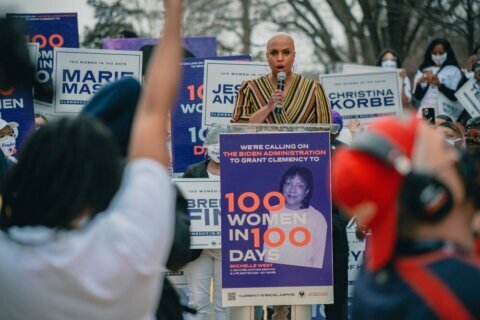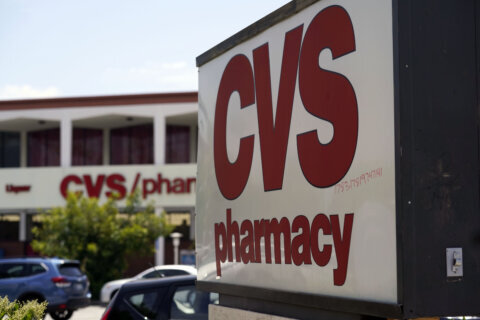There are several players in the effort to control and stop the coronavirus pandemic and D.C.’s Public Health Laboratory has been on the forefront from the beginning and remains flexible to meet evolving needs.
As early as January 2020, D.C.’s Department of Forensic Sciences (DFS) and its health department were collaborating to choose samples to send to the Centers for Disease Control and Prevention for COVID-19 testing.
“While we were one of first public labs to try to actually bring [testing] in-house,” Dr. Jenifer Smith, director of the Department of Forensic Sciences, said. “We are like a satellite ship of the mother ship of the CDC. That’s what we are as a public health lab.”
The city’s first case of COVID-19 was detected on March 8, 2020 — just days after the laboratory decided to begin operating seven days a week after launching on March 2.
- Sign up for WTOP alerts
- Latest coronavirus test results in DC, Maryland and Virginia
- Coronavirus vaccine FAQ: What you need to know
- Latest vaccination numbers in DC, Maryland and Virginia
- ‘We’re ready:’ Montgomery Co. moves ahead with plan for large vaccination site
- Maryland to honor COVID-19 victims with twilight ceremony Friday
Looking for more information? D.C., Maryland and Virginia are each releasing more data every day. Visit their official sites here: Virginia | Maryland | D.C.
Initially, the city had the only laboratory that even hospitals could rely upon for testing.
“There were no private labs doing this testing in the first few weeks of this. But, now there’s a consortium of groups that do testing for the residents here in the city,” said Smith.
When D.C.’s COVID-19 sample testing laboratory first got online, it was processing 25 samples a day. Now, it’s doing about 1,750.
While noting that more than 1,000 D.C. residents have lost their lives to COVID-19 and anything related to that should not be celebrated, Smith said it is impressive what the city has been able to accomplish related to testing.
“The community testing combined with our testing has resulted in — over 1 million D.C. residents have been tested,” said Smith.
Sequencing positive COVID-19 samples can show which variant caused the infection, and it can reveal sources of outbreaks within a facility, for example.
But a lot of sequencing isn’t happening in the city for a few reasons.
In order for sequencing to be effective, a positive COVID-19 test has to be a strong sample and new or lingering infections provide weaker samples. Plus, the process can be very labor-intensive.
But the chief of the Molecular Diagnostics Unit at DFS’ Public Health Lab said automation of an increasing number of steps is helping.
“Right now, we’ve gone from only being able to sequence 14 islets a week to now we’re up to at least 48, possibly 96. Depending on the timing, we can at least get in multiple runs with making just one part of our steps automated,” said Dr. Jocelyn R. Hauser.
“We’re working to get more steps automated so that we can get our capacity even higher,” she said.
As for how samples are being prioritized for sequencing?
“DFS will now utilize sequencing to answer questions from epidemiologists from D.C. Health, whether it is to determine the prevalence of a variant or the source of an outbreak,” Smith told WTOP in an email.








